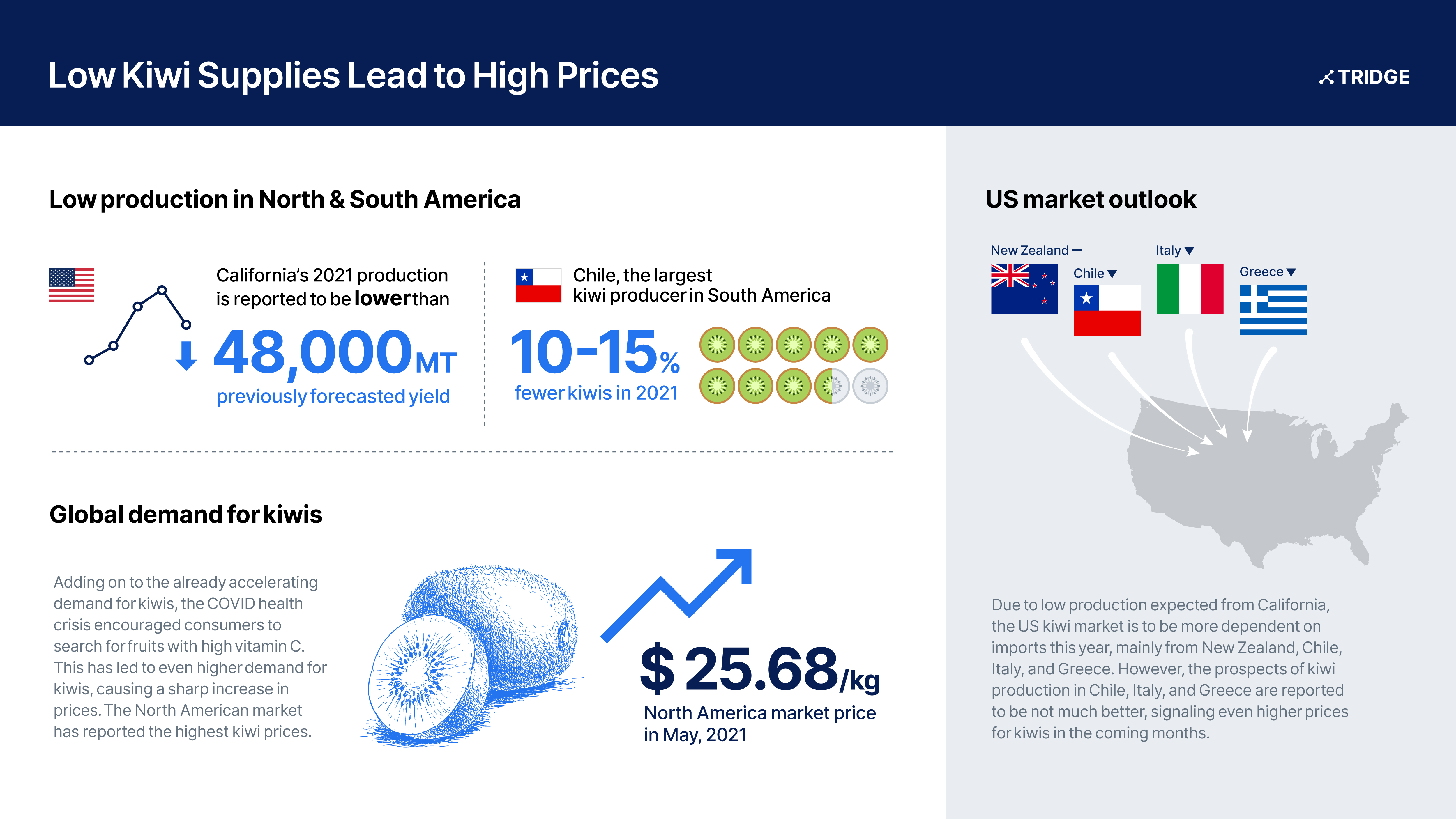
Not a Good Productive Year in the Americas
Chile is the largest producer of kiwis in the Americas and the sixth-largest producer in the world. According to the Chilean Kiwi Committee, in the last 2020 season, a total of 168,300 tones were produced, from which 146,323 tons were exported. However, for the 2021 season, the effects of COVID have altered the pace of work, limiting the availability of labor in Chilean production areas, which has caused a drop in production and delayed harvest. Even the Chilean season started just a couple of months ago. The Chilean committee has reported an estimated 10% to 15% decrease in this year’s production volume.
California is another kiwi producer in the Americas, mainly in the northern California regions. Kiwi production in this area has been increasing over the years. However, the 40,000 tons that have been harvested last season are far from meeting the accelerated, increasing demand for this fruit in the US. With the kiwi harvest already over in California since November last year, the USDA announced a drop in production from their forecasted yield of 48,000 tons. The actual kiwi production represents 52% of what was imported from the fruit last year. Furthermore, is estimated that 60.3% of the consumed kiwi in the US is imported while 39.6% is of domestic production.
Global Increase in Demand
In 2020, the US imported USD 182 million in value from fresh kiwis, around 73,000 tons in quantity. The US has been steadily increasing its imports from this fruit as consumption has remained strong over the last year. However, over the previous year, there has been an increase in demand for this super fruit, due to its significant contributions to people's health, primarily due to its high vitamin C concentration. After going through the COVID health crisis, today there is a considerable market demand for kiwis in the Southern and Northern hemispheres. The global increase in demand for products high in vitamin C is one of the key factors behind the price rise.
The North American market has reported the highest kiwi prices in recent years. In May, the average reported price was USD 25.68 per kilogram for containers of nine kilograms or 19.8 pounds, which is a 15% year-on-year increase. In comparison, the average price in April reached USD 25.04 per 9kg (19.8lb) container, which is 60% higher year on year.

Source: Tridge
US Market Outlook
The US kiwi market is no exception to the increasing global trend on demand for fruit. However, the production volume in the US hasn´t been able to increase due to not having the most favorable weather conditions and a short harvest window for the fruit (October and November). Therefore, imports in the US are considerably dependant on the current availability of the main suppliers. In 2020, the US imported USD 182 million worth of fresh kiwifruit, from which 47% was from New Zealand, its leading supplier. Although New Zealand hasn’t reported any production drops, most of the kiwifruit volumes from New Zealand are exported to the Asian market and Europe.
The other leading suppliers for the US are Chile that has 22.6% of the import share, followed by Italy with 20.2%, and Greece with 10.1%. The decreased and delayed Chilean production is what is mainly causing the scarce supply in the US and pushing prices higher. However, the USDA has also reported lower kiwifruit stocks in Italy, Greece, and France, which has created significant concerns among US traders for future kiwi availability in the market. New Zealand could be the primary beneficiary of the rise in prices of the US if they are able to supply the market with larger quantities than in the past.
Source:
- Fresh Plaza. "Chile kiwifruit harvest and export starts."
- Fresh Fruit Portal. "Chilean kiwifruit production delays inflate prices."
- Fresh Plaza. "Approximately 30 percent jump in pricing on Chilean kiwis."





